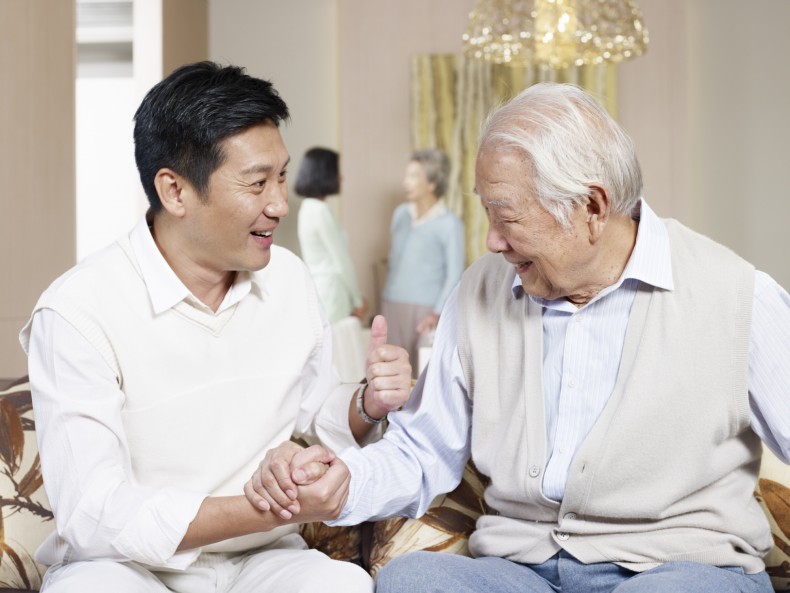
On 26 August 2015, the Ministerial Committee on Ageing announced a raft of measures to help the growing population of seniors here age confidently and lead active lives. The government will spend some S$3 billion to ensure that seniors have access to active learning, the appropriate housing and community infrastructure for their needs, and protection if they are vulnerable. For instance, there will be facilities in future Housing and Development Board (HDB) developments that can provide day care, day rehabilitation and other services to assist older folk with daily living, such as housekeeping and grocery shopping.
This is welcome news, especially because there will be 83,000 elderly living alone by 2030, up from 35,000 currently, according to figures from the Ministry of Social and Family Development. They will need society’s help. But how can we ensure that they will age happily? A recent research study conducted by the Institute of Policy Studies (IPS) on ageing in Singapore found that 98% of the participants agreed that having family around them is part of successful ageing. For those who don’t have family, what more can be done to help them? I found it worrying that a study on the elderly in Singapore in 2012 by the National University Hospital said that even when older folk look physically fit, many of them are lonely, sad or depressed. More worrying is, according to the same study, this rise in elderly depression could cause suicide rates to increase. According to a Sunday Times report in 2012, Singapore’s elderly suicide rate per 100,000 for men was 28.7 and 19 for woman in 2009, much higher than countries such as the United States.
Technology as an enabler, not an excuse
Technological advancements have provided convenience in many ways. Anyone can buy groceries online anytime without leaving home. Families who leave elderly persons at home with caregivers can install sensors and a monitoring system, and check these via a phone app. For example, the HDB’s Smart Elderly Monitoring and Alert System (SEMAS) uses motion sensors to track the living habits of the elderly in their homes, and alerts their caregivers when irregular patterns appear. SEMAS also comes with a portable panic button that the elderly can press in times of need and distress. Companies such as Japanese technology giant Softbank have started developing robots that are capable of learning human emotions and identifying them. The robot acts like a companion and can communicate through voice, touch and emotions.
However, technology should not become an excuse for families to interact less with their elderly folk. The emotional needs of the elderly should be taken care of by kin and the community and not left to robots.
Younger family members can take it upon themselves to do more for seniors in their midst. It could be something as simple as ensuring that they are included in daily activities — such as having meals together. As seniors age, family members should not neglect them but be more sensitive to their emotional needs.
Outside of family, what more can be done?
Various organisations plan many activities for the elderly. Activity centres and community wellness clubs have been sprouting up in community centres to encourage the elderly to remain active. Volunteers and social workers, through their house visits, should target the elderly, especially those living alone, to attend such activities where new friendships can be made.
A new emerging trend is the virtual retirement village, a well-being community that offers a combination of social, health and care services that can be accessed online from the comfort of home. It has gained popularity in the United States as it allows the seniors to age in place and stay active with other seniors. This can be replicated in densely populated Singapore where communities live close to one another. The elderly in the future will increasingly be tech-savvy and will be more comfortable using such online platforms. For example, ASPIRE 55, the first online virtual retirement village in Singapore, was set up by a team of facilitators to organise programmes focused on bringing the elderly together. With more outreach, more elderly can be involved in such online and physical activities that keep them physically and more importantly socially active.
Keeping the elderly active
The elderly have traditionally been at the receiving end of volunteering. However, as many now remain healthy despite their old age, more are able to continue contributing back to the community. Volunteerism, according to a study by Carnegie Mellon University, has social, emotional and even physical health benefits. According to the Ministry of Culture, Community and Youth, the participation rate of volunteers among the seniors has increased from 10% in 2010 to 17% in 2012, reflecting the sense of fulfilment the elderly receive when they volunteer. Volunteer and community organisations should work together to continuously promote and develop volunteering opportunities for the elderly. Besides volunteering, the elderly should take on mentorship roles in community centres where they can share knowledge and experience with the younger generation.
As Singapore grapples with the problem of ageing population, I hope to see the elderly remaining active in their families and the community. We should not let them fade into the background of society or even worse, be neglected or forgotten. In fact, their wealth of knowledge and experience should be shared and tapped upon. Technology can assist but never replace the process of caring for the elderly. Looking forward to about 40 years from now when I reach my sixties, I hope I would not need to talk to a robot to find company but instead age happily with the people I love around me.
Muhammad Syakir is a second-year student at Imperial College London and recently completed an internship at IPS in the Demography & Family cluster.
